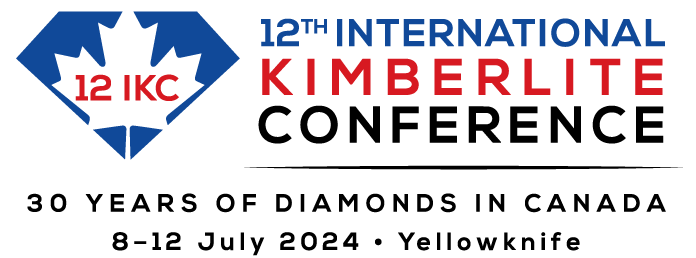30 Years of Diamonds in Canada
The discovery of economic diamond deposits in the Lac de Gras area of the Northwest Territories is a story of dedicated commitment and perseverance. The search began in 1981 with an investigation of the Mountain Diatreme located in the Mackenzie Mountains, southwest of Norman Wells, NWT. In 1982, Charles Fipke and Stewart Blusson of Diamet Minerals, with assistance from Hugo Dummett of Superior Oil sampled areas around Blackwater Lake 490 km west of Yellowknife and recovered kimberlite indicator minerals with compositions consistent with diamond-bearing source rocks. This led to a systematic tracking of a trail of indicator minerals during the following ten summers over a distance of six hundred kilometres to the east.
By 1990, Fipke and Blusson had established that the likely source for the indicator minerals was in the Lac de Gras region and staking of a large land package was initiated. Later that year, an exploration agreement was negotiated with Hugo Dummett who had since joined BHP Minerals. In early 1991, while investigating a lake in the southeastern part of the claim block that Fipke thought was crater-like in appearance, his son Mark discovered a large bright green Cr-diopside crystal on a ridge immediately down-ice from the lake. This critical piece of evidence added confidence to Fipke’s theory that Point Lake hosted a kimberlite pipe, which prompted an immediate ground magnetic survey by geophysicists from BHP. When a compelling magnetic anomaly was evident, the target was immediately tested. In September 1991, an angled core hole drilled from the eastern shore of Point Lake intersected kimberlite at a depth of 137 meters downhole. The subsequent announcement by BHP and Dia Met to the Vancouver Stock Exchange in November 1991 that 81 diamonds had been recovered from a 59-kilogram sample of kimberlite core from the discovery hole, triggered the largest staking rush in Canadian history. Within a few months of the announcement, most of the area between Yellowknife and the Arctic coast was blanket staked by exploration and mining companies, prospectors and stock market entrepreneurs eager to discover Canada’s first diamond mine.
By December 1993, BHP had signalled its commitment to develop Canada’s first diamond mine by submitting a Project Description Report to the Department of Indigenous and Northern Affairs. Final approval to build a mine was received from the federal cabinet in November 1996 following a full Environmental Impact Statement, a thorough review process involving the NWT Water Board, the Federal Department of Fisheries and Ocean, extensive public hearings and the negotiation of Impact and Benefits Agreements with the local indigenous groups. After an intense construction period, Canada’s first diamond mine, Ekati, was officially opened on 14 October 1998.

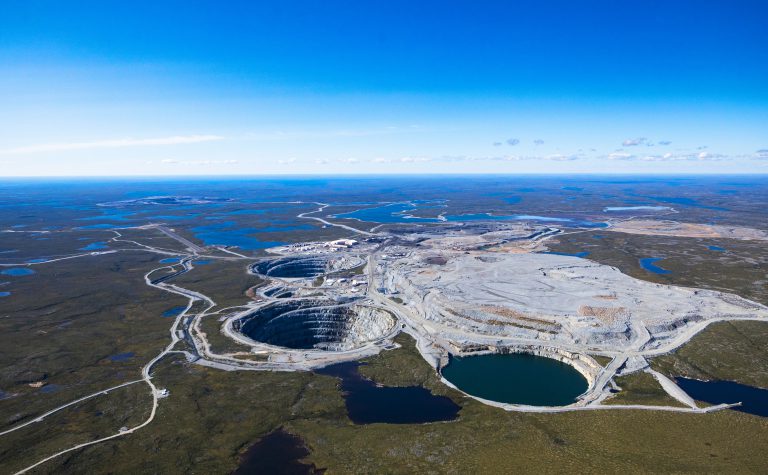
One of the first companies to respond to the Point Lake announcement was a small private company run by Lee Barker and Gren Thomas called West Viking Exploration. Barker and Thomas immediately started staking in the area to the south of the BHP/Dia Met claims block and were successful in securing the ground where the Diavik Diamond Mine was subsequently developed. With a good land position secured, West Viking merged into Aber Resources which subsequently signed an option agreement to explore the claims with Kennecott Canada Inc, a subsidiary of Rio Tinto plc.
The Kennecott/Aber team got to work quickly and soon found more that 30 kimberlite pipes, but none had any significant quantities of diamonds. The first major discovery was made in March 1993, with a kimberlite pipe called A21. However, an even more exciting discovery was to come the following year. Just before the ice started to break up in 1994, after about 10 days of unsuccessful drilling on a promising looking target, the team decided to gamble with one last hole for the season. They moved the rig about 15 metres to the south and finally hit kimberlite just as the ice was failing and they were forced to pull the rig off of Lac de Gras. Later that night when Aber geologists Robin Hopkins and Eira Thomas were inspecting the newly discovered kimberlite core, they broke a piece of kimberlite along a natural fracture. On one side of the core they saw a large indentation and on the other side was a two and a half carat gem quality diamond! The target they drilled that day was A154, which was subsequently developed into one of the richest kimberlites ever to be mined in the world, one of the pipes mined by Diavik Diamond Mine. After the discovery of A154 in 1994, the Aber/Kennecott joint venture arrangements were assigned into the Diavik Diamond Mines joint venture, which went on to successfully complete a feasibility study to mine the A154N, A154S, A418 and A21 pipes. After a similar review process to that undertaken for Ekati, the Diavik Mine was successfully constructed and commenced commercial production in January 2003.
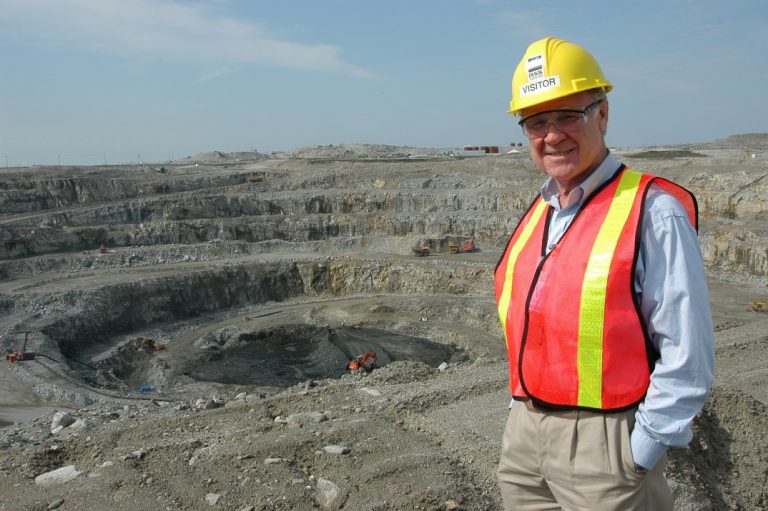
In 1987-1988, before the historic 1991 Point Lake announcement, De Beers Group, using systematic sediment sampling and geophysics, discovered the Attawapiskat Kimberlite Field in the James Bay Lowlands of northern Ontario, approximately 90 km west of the coastal community of Attawapiskat First Nation. Within this Kimberlite Field the largest kimberlite was shown to be economic and the Victor Mine, Ontario’s first and only diamond mine, opened in 2008. The open pit mine completed mining and processing activities by mid 2019. Active closure commenced in July 2019 with substantial completion of closure during the second half of 2023 followed by long-term monitoring until at least 2039. It is estimated that De Beers Victor Mine will contribute C$6.7 billion cumulative GDP impact for all of Ontario during the life of the mine.
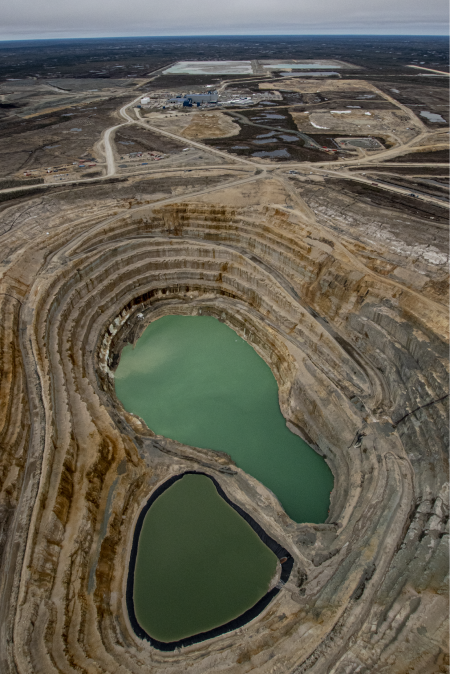
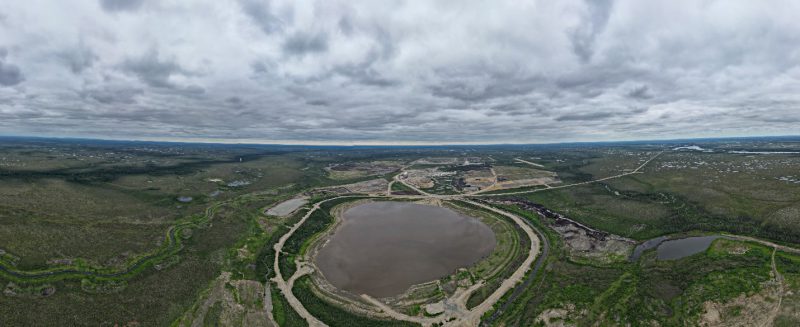
At the same time when Victor was found in northern Ontario, De Beers Group following up other systematic sampling discovered the first kimberlite in the Canadian Prairies. The Sturgeon Lake 01 kimberlite is located 35 km west of Prince Albert, Saskatchewan. This and a second kimberlite found nearby were determined not to be in situ pipes but glacially transported megablocks. In 1989 Uranerz Exploration and Mining Limited discovered the Fort à la Corne kimberlite province approximately 60 km east of Prince Albert.

Since then, exploration at Fort à la Corne has been ongoing with the following different joint venture partners including Cameco Corporation, De Beers Canada Inc. and Kensington Resources Ltd. In 2005 Shore Gold Inc., with participation from Newmont Mining Corporation, gained control of the Fort à la Corne Joint Venture and focussed on the evaluation of the Star and Orion South kimberlites. In mid 2017, Star Diamond Corporation (formerly Shore Gold Inc.) announced an agreement with Newmont, converting their project interest to an equity interest, thereby Star Diamond held 100 percent of the mineral dispositions covering the Fort à la Corne kimberlites. Simultaneously Star Diamond announced an option to joint venture agreement with Rio Tinto Canada Exploration Inc . In 2018 Star Diamond Corporation published a Preliminary Economic Assessment (PEA) for the Star and Orion South kimberlites, located at the southeast end of a chain of some sixty kimberlites, many of which have been shown to contain diamonds. The PEA estimates that these two kimberlites contain potential plant feed of some 470 million tonnes of kimberlite, at a weighted average grade of 14 cpht, containing some 66 million carats that can be produced over a 34 year life of mine. Early in the evaluation of these kimberlites it was noted that the dominant kimberlite units contain diamond populations with anomalously coarse size frequency distributions. More recently it has been determined that these diamond populations contain unusually high proportions of Type IIa diamonds. The coarse diamond size frequency distributions and the significant proportions of Type IIa diamonds contribute to the diamond price estimates for Star and Orion South that approach US$200 per carat.
Diamond exploration work in the Northwest Territories and Nunavut in the early 1990’s resulted in other significant discoveries. Approximately 160 km north of Ekati and Diavik, the Jericho Kimberlite was discovered in 1994 by Canamera Geological Ltd. Tahera Diamond Corporation operated the Jericho Mine in 2006-2007. Canamera Geological Ltd in 1995 also discovered the 5034 kimberlite at Kennady Lake, approximately 280 km northeast of Yellowknife. A joint venture between De Beers Group, Mountain Province Mining and Camphor Ventures Canada continued exploration, and discovered and evaluated additional kimberlites leading to the opening of the Gahcho Kué Mine in 2016. This mine is a joint venture between De Beers Canada Inc. (51%) and Mountain Province Diamonds Inc. (49%). Gahcho Kué is an open pit operation, mining three kimberlite pipes in sequence: 5034, Hearne and Tuzo, and its current life of mine is estimated to 2030. The joint venture partners are actively seeking to extend the life of mine, including a possible underground operation following the discovery of additional kimberlite associated with the Hearne resource, although no decisions have been made at this time.
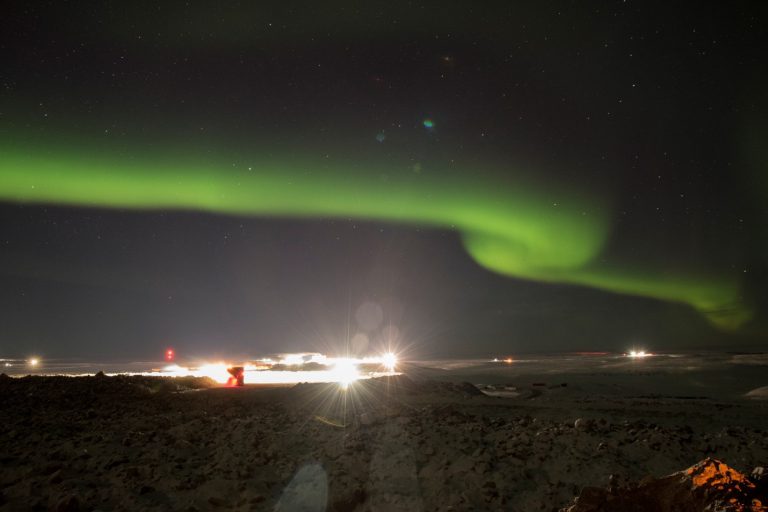
In 1996 Aber Resources Ltd and Winspear Resources Ltd discovered the Snap Lake kimberlite 220 kilometres northeast of Yellowknife. The project was acquired by De Beers Canada in 2000 and the Snap Lake Mine opened in 2008, becoming the first De Beers Group mine outside Africa and Canada’s first all-underground diamond mine. The Snap Lake ore body is an on average 2.8 metre thick dyke that dips an average of 12° to 15°. The Mine operated until December 2015 when it was placed into care and maintenance. In April 2022, Snap Lake entered active closure, which is expected to be substantially complete by H2 of 2024, to be followed by long-term monitoring.
In 2001 the Ashton Mining of Canada Inc. – SOQUEM Inc. joint venture discovered the Renard kimberlites in the Otish Mountains area, approximately 250 km north of the Cree community of Mistissini and 350 km north of Chibougamau in the James Bay region of north-central Québec. The Renard Diamond Mine, now wholly owned by Stornoway Diamond Corporation, is Quebec’s first and only diamond mine. The mine is operated by Stornoway Diamonds, a Canadian diamond exploration and production company headquartered in Longueuil. Stornoway is owned by Osisko Gold Royalties LTD, Investissement Québec, TF R&S Canada LTD and CDPQ. Its official opening was celebrated on 19 October 2016 and commercial production was declared on 01 January 2017.
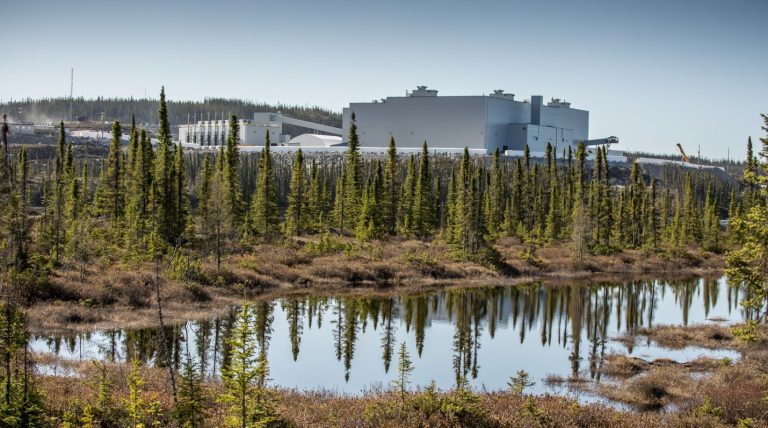
In 2008 the first kimberlite of the Chidliak Province was found by Peregrine Diamonds Ltd on the Cumberland Peninsula, Baffin Island, Nunavut Territory, about 120 km from the territorial capital, Iqaluit. Further exploration through 2014 defined an 80 km by 60 km province of 71 kimberlites on the Chidliak claim and an additional three on the adjacent Qilaq claim. De Beers Canada acquired the Chidliak Project in September 2018 as part of the purchase of Peregrine Diamonds Ltd. In 2019, 35 kimberlites were prioritized and 41 mining leases covering 42,000ha were recorded. Two deposits, CH-6 and CH-7, have been evaluated to develop an inferred level of resource confidence. The inferred resources from the CH-6 and CH-7 kimberlites are estimated to contain about 22 million carats at an estimated grade of about 1.8 carats per tonne. The Chidliak Project is being advanced using Diamond FutureSmart principles, including low carbon energy, modular, movable and connected infrastructure, low water use, remote and autonomous operation and a modern employee operating model. The Project is currently in the permitting phase.
In 2012 in the Northwest Territories, Kennady Diamonds Inc began exploring on claims adjacent to the property that would become the Gahcho Kué Mine. Over the next four years, three kimberlites were discovered which together contain 18 million carats of diamonds. These kimberlites are unique in Canada because they are unconventional irregular-shaped inclined pipe-like bodies. Although they are not being mined, they could contribute to operations at the nearby Gahcho Kué Mine.
12 IKC is celebrating the ‘30 Years of Diamonds in Canada’ outlined above during which hundreds of kimberlites were discovered across Canada leading to the opening of seven mines and Canada becoming one of the top three diamond producers in the world (by value). Four mines are currently operating.
